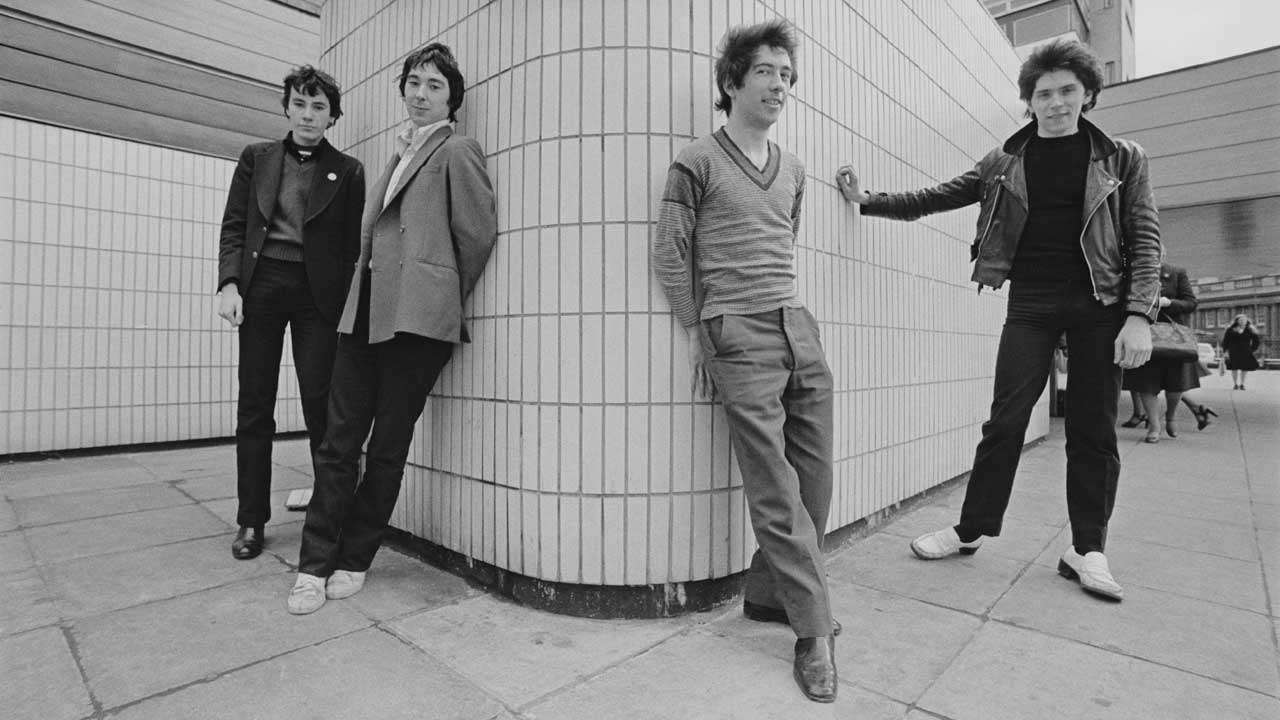A beginners' guide to Buzzcocks in 10 songs of boredom, thwarted love and mid-life confusion
10 essential pop-punk classics from the band who wrote the book

With Pete Shelley's sneering yet sweet voice and Steve Diggle's relentless guitar, Buzzcocks were the Mancunian punk misfits who made disaffection sound catchy. Their songs were anthems for the frustrated, the lovelorn, and anyone tired of polite society, but they could write rings around their more nihilistic contemporaries, crafting songs didn't so much unfold as burst giddily into life.
Buzzcocks broke up in 1981 after just three studio albums and the brilliant Singles Going Steady compilation, but reformed in 1989 and have been with us ever since, electing to continue after Pete Shelley's sudden death in late 2018. Buzzcocks' 10th studio album, Sonics in the Soul, was released in 2022.

Boredom
This timeless punk statement from the band’s self-released 1977 debut EP Spiral Scratch features a two-note guitar solo and gloriously sarcastic lyrics of youthful disdain. It was produced by future Factory Records studio legend Martin Hannett.
Orgasm Addict
Banned by the BBC, the first major-label Buzzcocks single is a vintage blast of Shelley/Devoto provocation about the joys of wanking. The striking sleeve was designed by visual artist, Manchester muse and future Ludus singer Linder Sterling.
What Do I Get?
From 1977, the first in a glorious run of chart hits. Shelley’s infectious buzzsaw plea for "a lover like any other" allegedly reflected his unrequited feelings for Sterling, who was dating Howard Devoto at the time.
Ever Fallen In Love (With Someone You Shouldn't've)
Taken from second album Love Bites, the band’s highest-charting and much-covered punk-pop classic sounds like another heartbroken Shelley confessional, but was actually inspired by a line in the Hollywood musical Guys And Dolls.
Everybody’s Happy Nowadays
This instantly infectious shot of amphetamine bubblegum angst rewinds Buzzcocks to their sarcastic punk-pop roots, as a sulky Shelley protests: "Life's an illusion, love is a dream." The title came from a line in Aldous Huxley's Brave New World.
Sign up below to get the latest from Classic Rock, plus exclusive special offers, direct to your inbox!
Why Can’t I Touch It?
Slower and heavier than most early Buzzcocks material, this brawny, six-minute beast from 1979 reflected Diggle’s more experimental, prog-leaning tastes. Eddie Vedder has covered the song live many times.
Harmony In My Head
Written and sung by Diggle, the most adventurous of the band’s Top 40 hits is a skull-pounding modernist montage of fragmentary street scenes inspired by James Joyce’s stream-of-consciousness literary style, all wrapped in a fantastic swooping chorus.
Between Heaven And Hell
From 2006’s underrated eighth album Flat-Pack Philosophy. Diggle wrote and sings this portrait of midlife confusion: "Everything you thought you knew is different from before."
It’s Not You
From the band’s 2014 album The Way. Shelley revisits the signature lovesick speed-pop style of his early Buzzcocks singles, but with the emotional wallop of middle-aged despair, plus some gnarly, Nirvana-ish bass guitar action.
People Are Strange Machines
Diggle’s stand-out contribution to The Way is a muscular mix of combustible garage-rock riffs with snarly, syncopated, new wave-ish vocals. Blammo!
Buzzcocks will be celebrating the 45th anniversary of Singles Going Steady with a show at Koko in London on March 22. Tickets are on sale now. The 45th anniversary edition of the album is released on March 8 via Domino.
Stephen Dalton has been writing about all things rock for more than 30 years, starting in the late Eighties at the New Musical Express (RIP) when it was still an annoyingly pompous analogue weekly paper printed on dead trees and sold in actual physical shops. For the last decade or so he has been a regular contributor to Classic Rock magazine. He has also written about music and film for Uncut, Vox, Prog, The Quietus, Electronic Sound, Rolling Stone, The Times, The London Evening Standard, Wallpaper, The Film Verdict, Sight and Sound, The Hollywood Reporter and others, including some even more disreputable publications.
- Fraser LewryOnline Editor, Classic Rock

